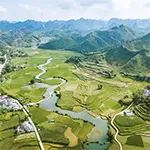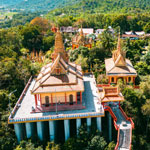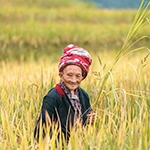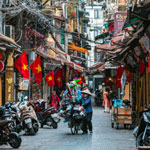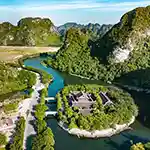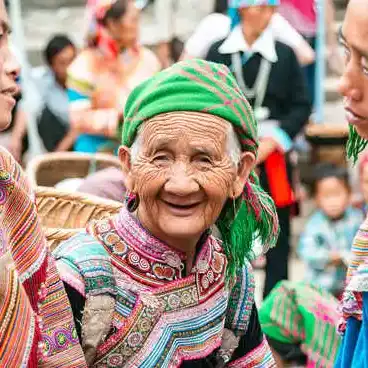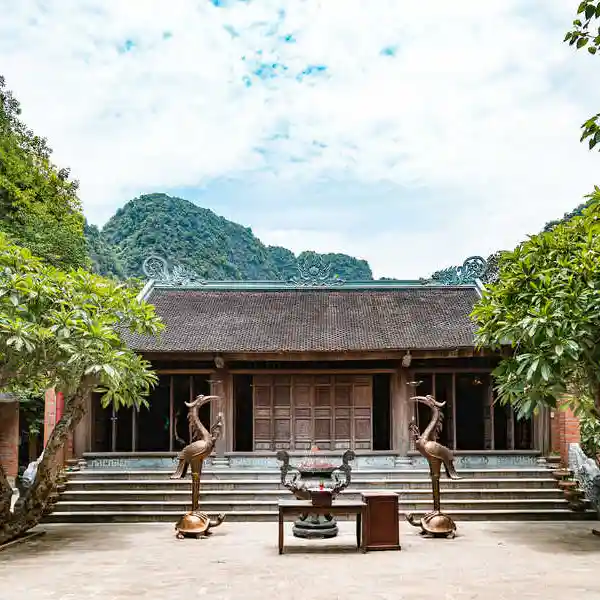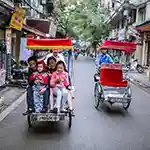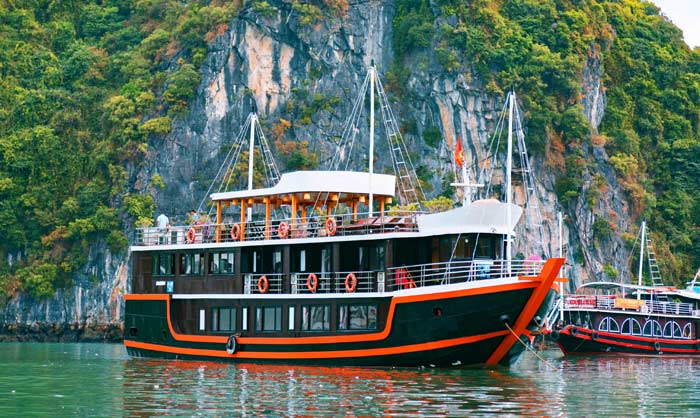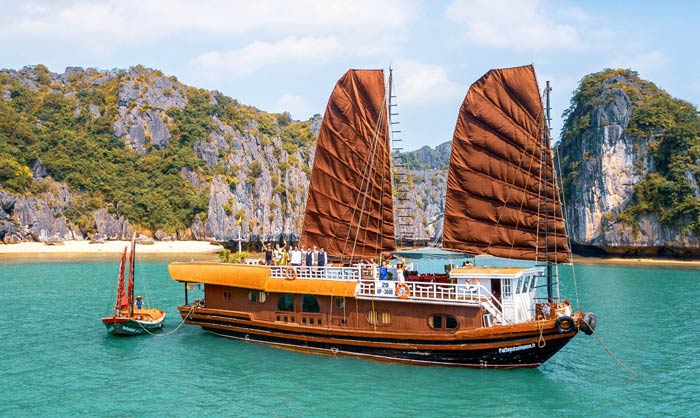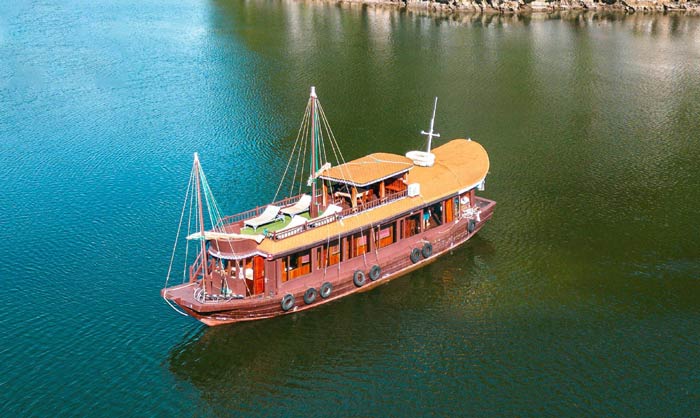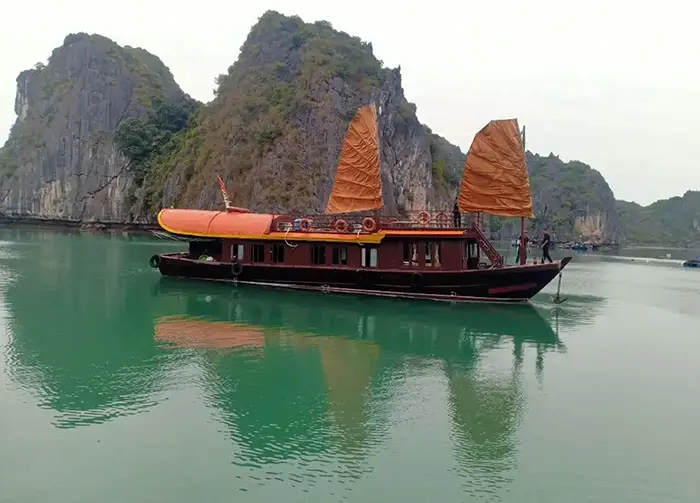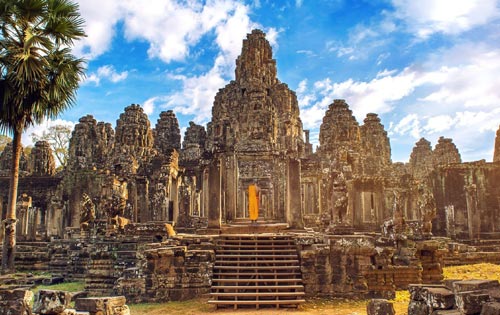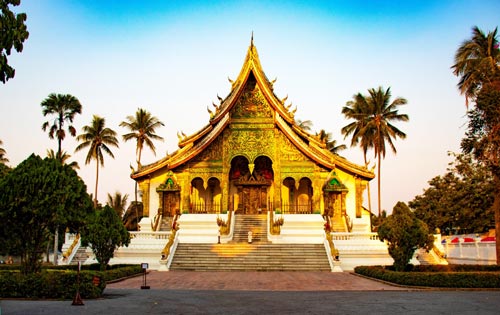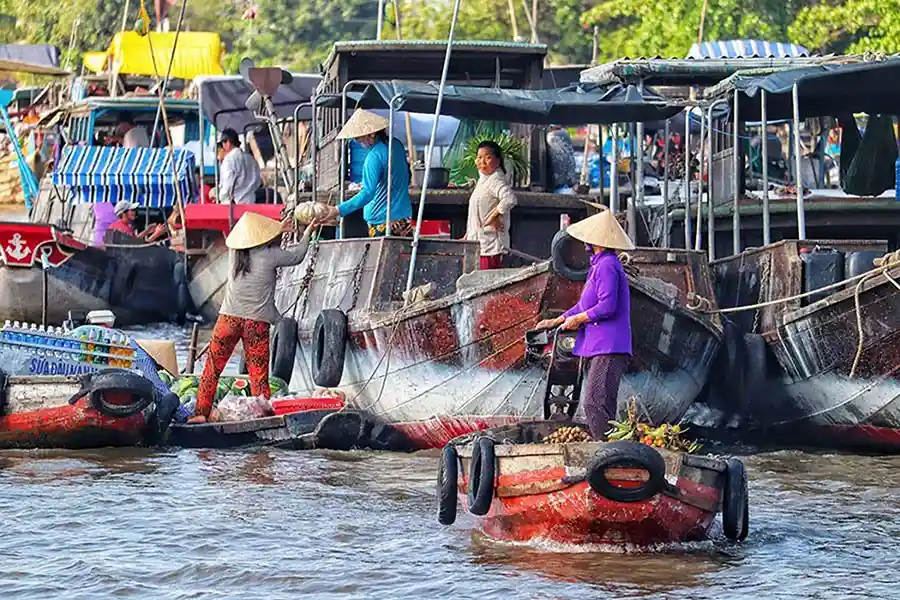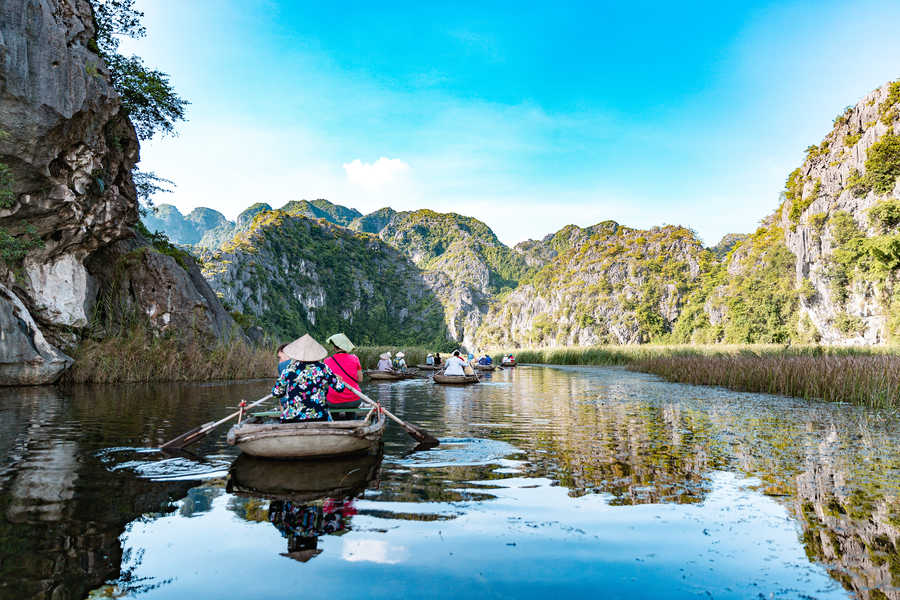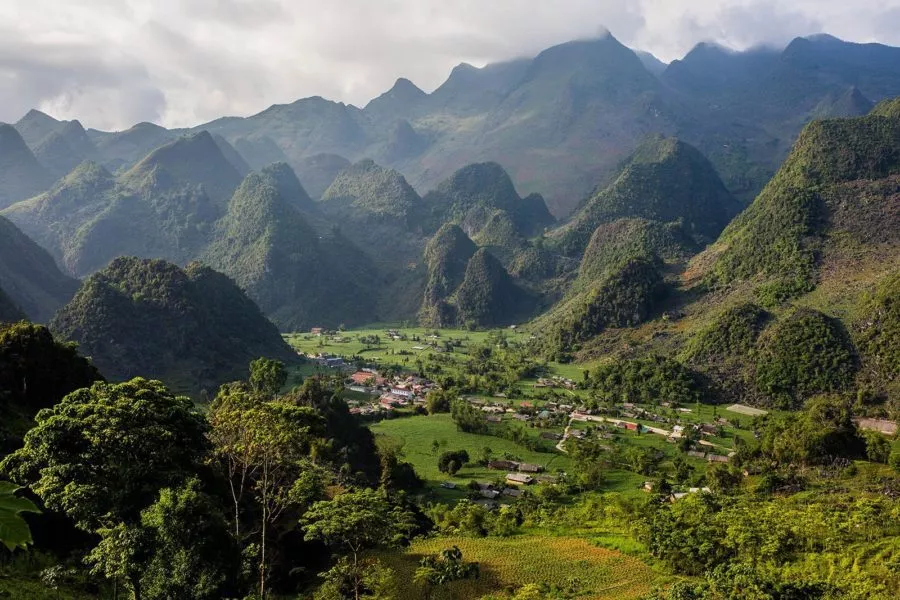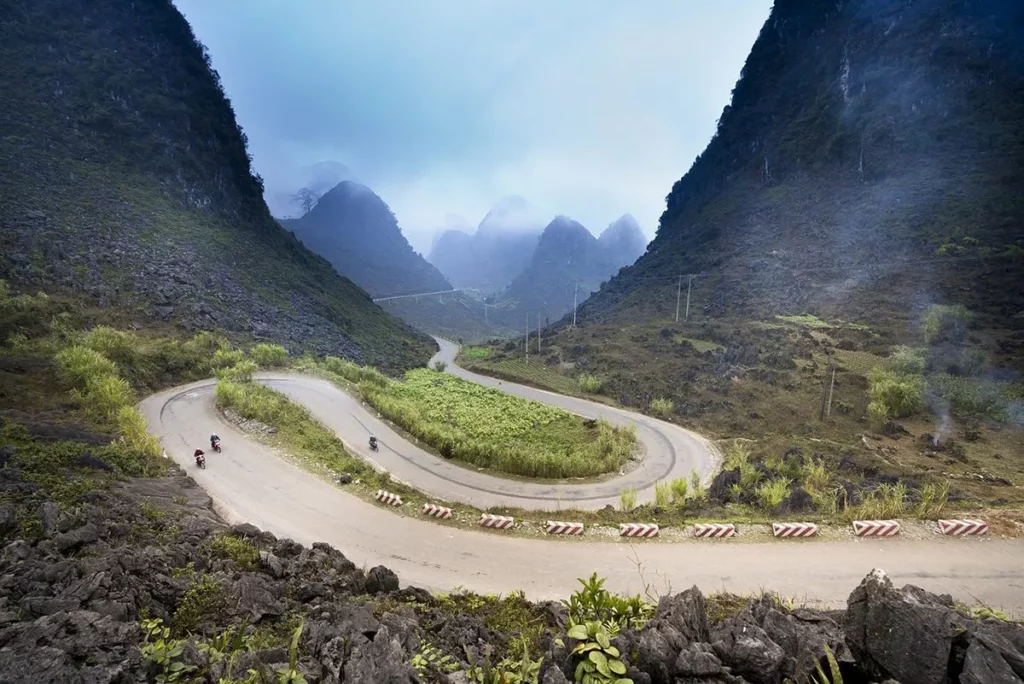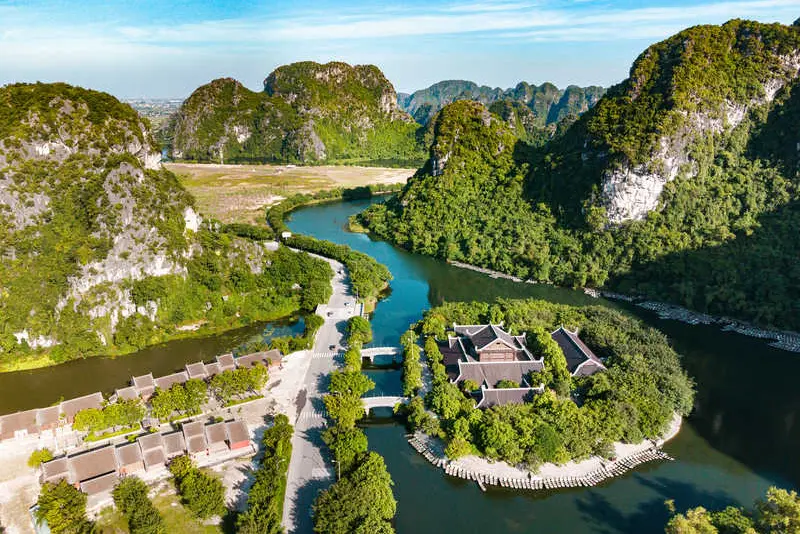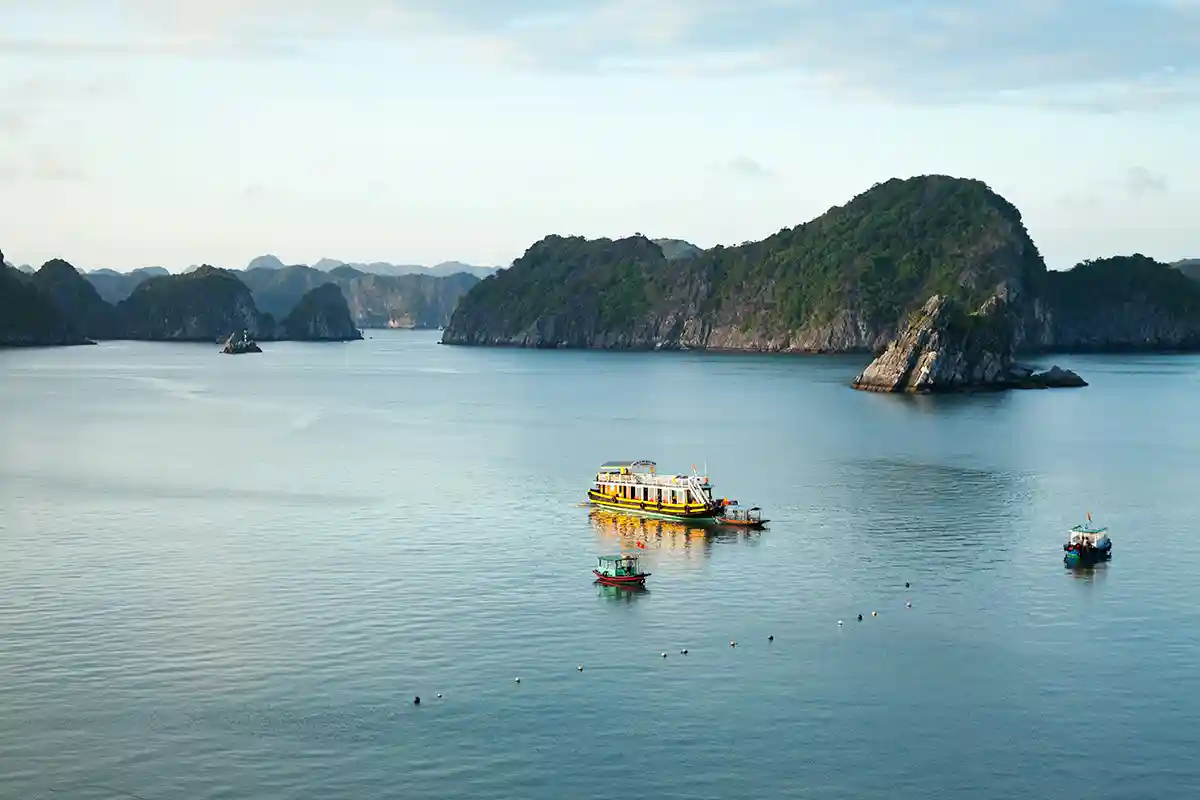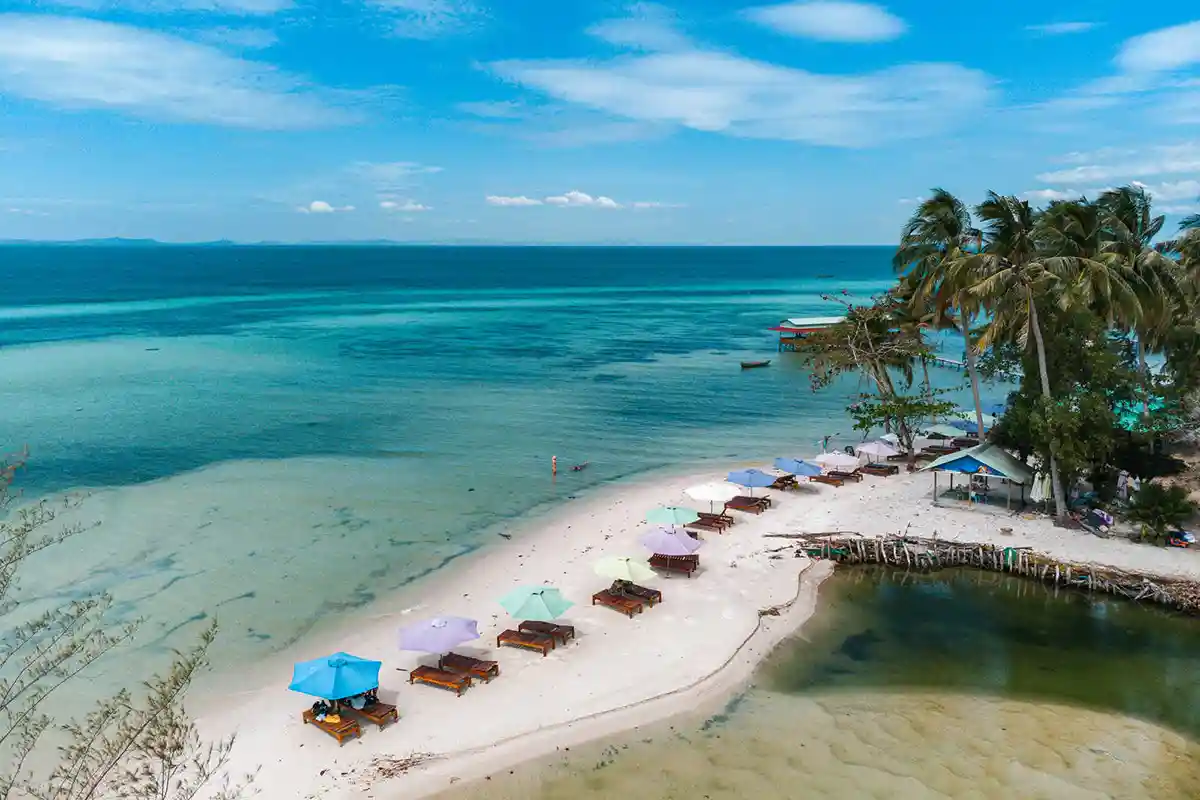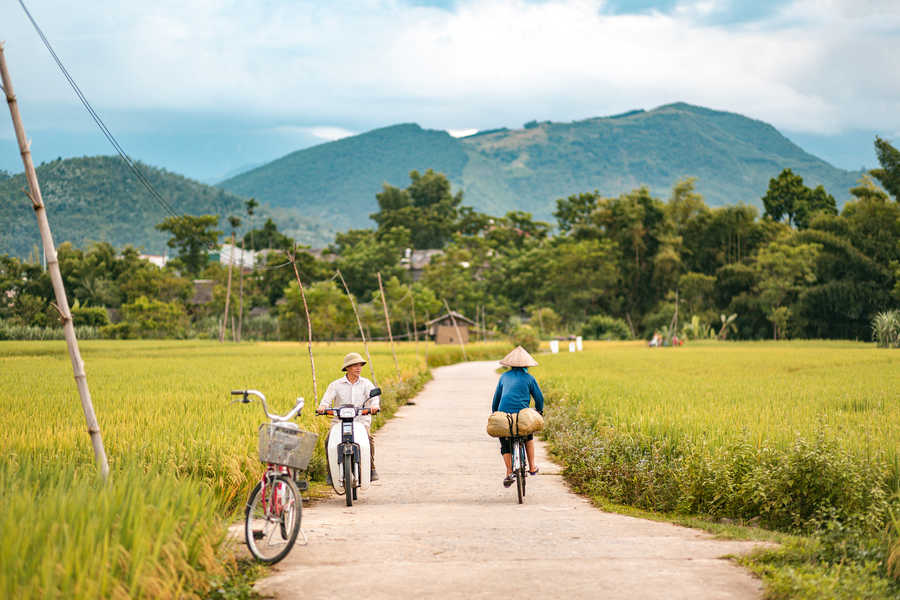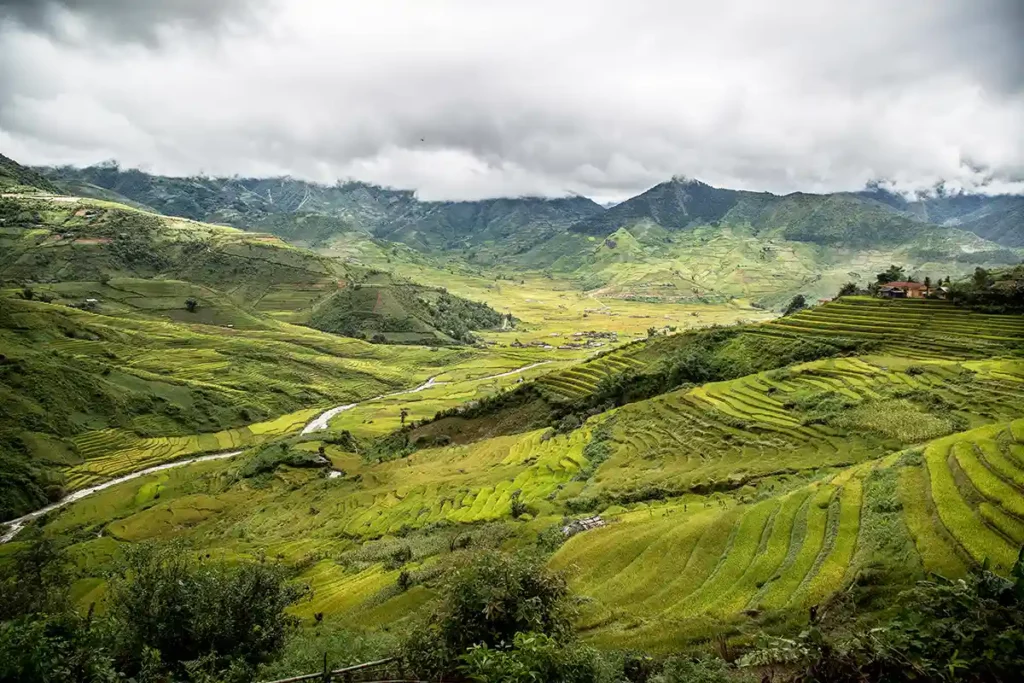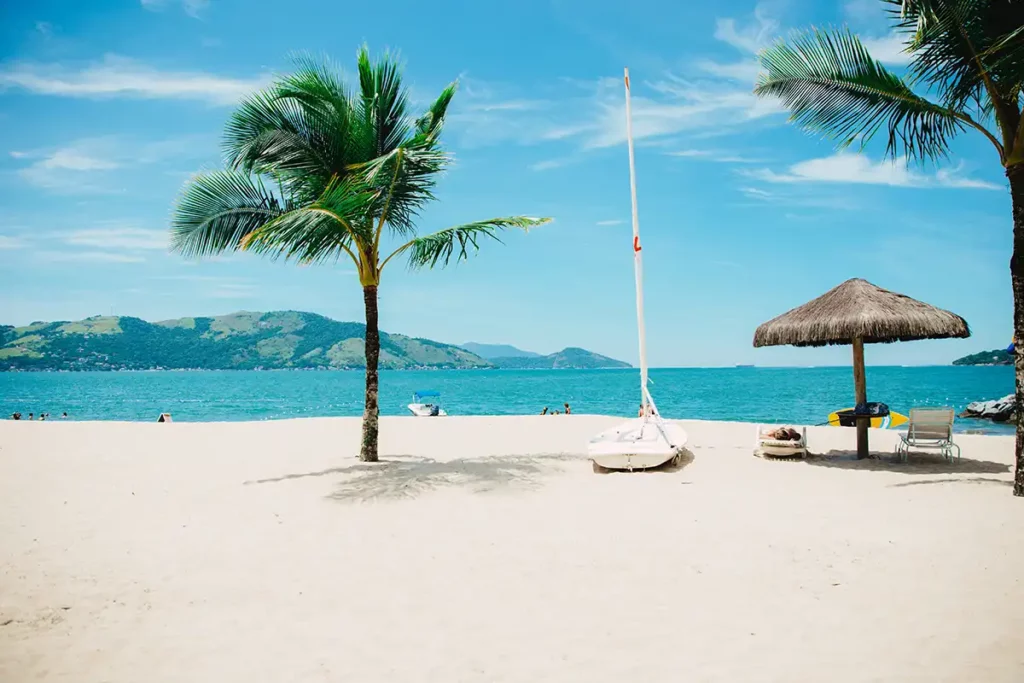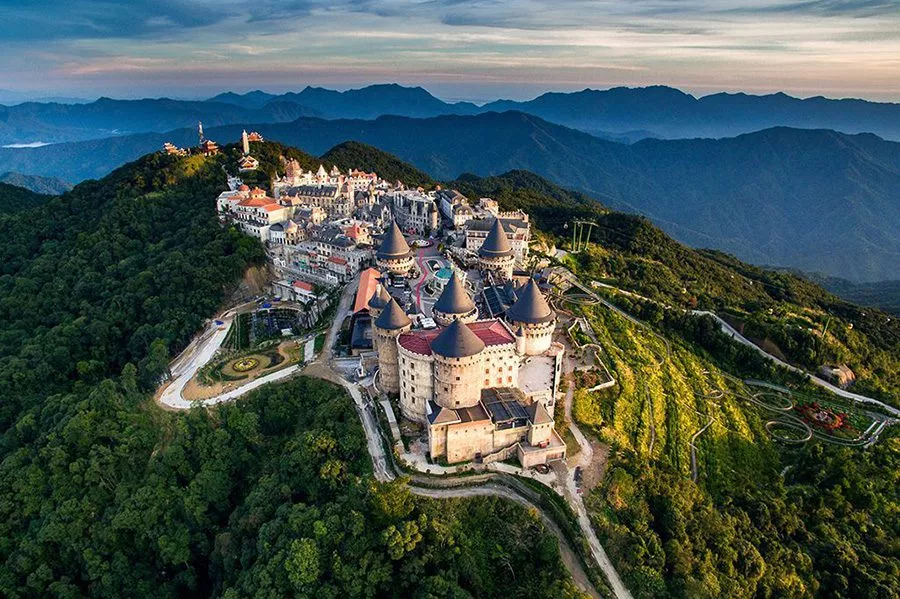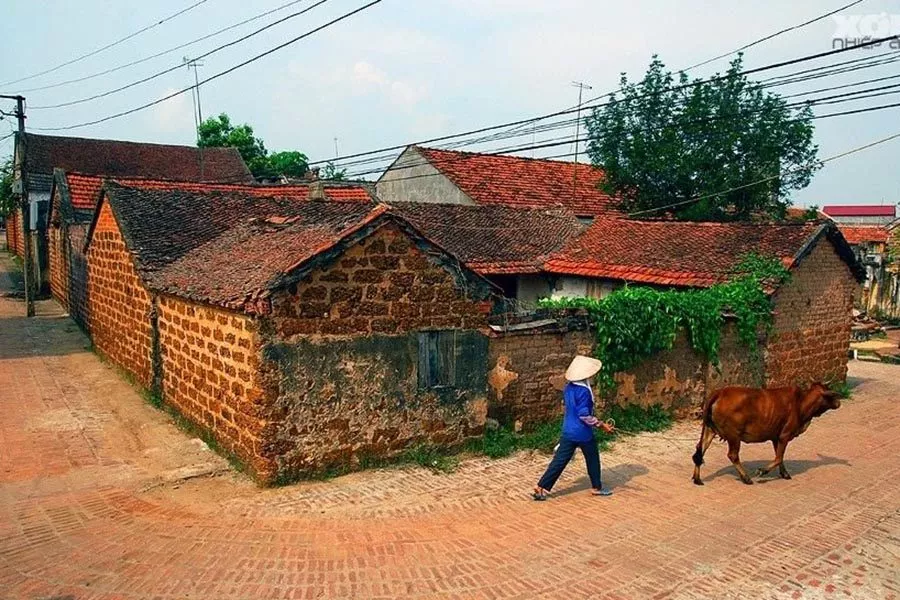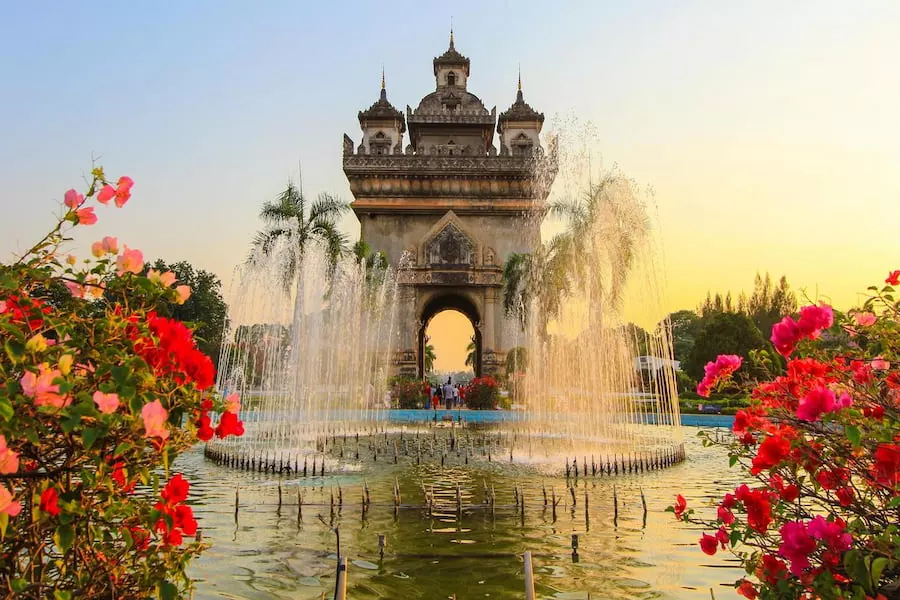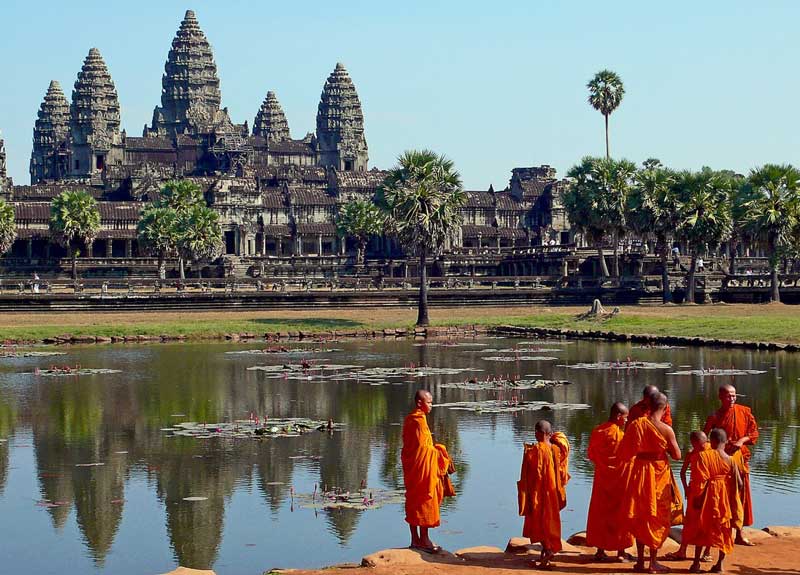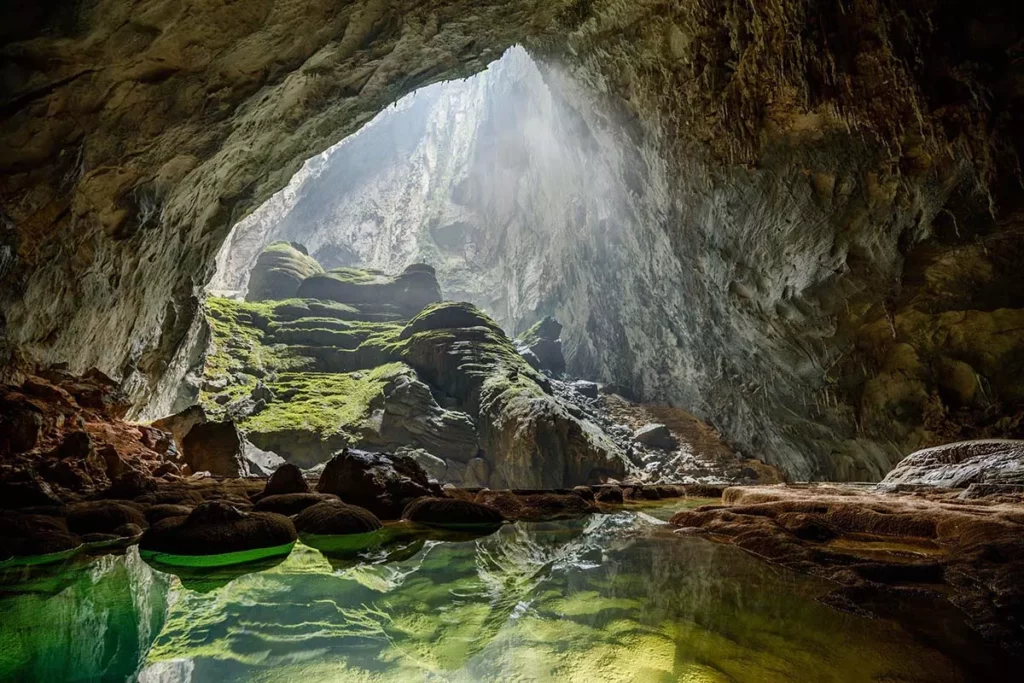A river delta is the point where the river splits into several branches before flowing into the sea.
It is in Phnom Penh that the Mekong River begins to split, first into two main branches: the Mekong and the Bassac. These two waterways then flow into present-day Vietnam, branching out into a dense hydrographic network. The slow current of these channels makes the Mekong Delta one of Vietnam’s richest production hubs, particularly for rice cultivation. In fact, the Mekong Delta alone accounts for a quarter of the country’s cultivated land. Most of this land is dedicated to rice paddies, contributing to more than half of Vietnam’s total rice production.
Thanks to the Mekong River, the delta is not only the region with the richest fishing grounds, but above all, the heart of aquaculture in Vietnam..
And finally, if you add to this the fruit harvest—accounting for nearly 35% of the country’s total production (with coconuts, bananas, mangoes, and mangosteens leading the way)—you’ll see why the Mekong Delta is such a thriving hub of trade!
In this article, we’ll take you through the main floating markets of the Mekong Delta—bustling hubs where all the region’s abundant products are traded.
Traditional markets in Vietnam
Markets are a defining feature of Vietnam’s cultural identity. They are not only places for trading goods, but also vibrant spaces for social interaction, where the people of this multi-ethnic country come together and coexist in harmony.
You’ll find many different types of markets in Vietnam: bustling city markets held daily, often starting at the crack of dawn; smaller rural markets, offering only seasonal and locally grown products; and the colorful ethnic markets of the northern highlands, usually held once a week, where various ethnic groups travel long distances—on foot or by motorbike—to gather, trade, and connect.
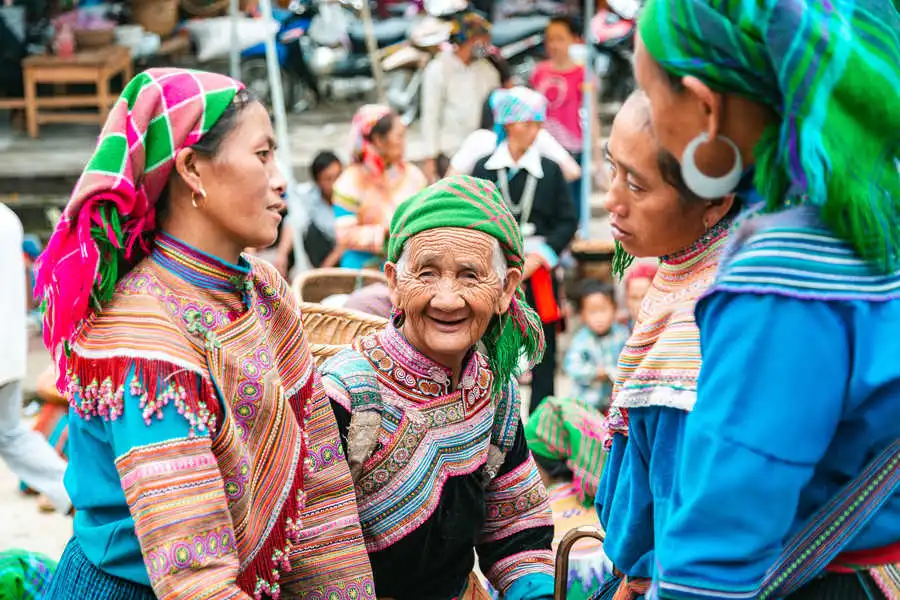
Hmong women at the Bac Ha Market, Lao Cai Province, Vietnam
There are also unique markets that follow the lunar calendar (such as Lunar New Year markets), focus on specific products (like the Go Rang conical hat market), or celebrate local traditions (such as the Khau Vai Love Market in Ha Giang Province).
Let’s now take a closer look at the floating markets—unique to river life in the Mekong Delta.
What is a floating market?
The floating markets of the Mekong Delta are unique traditional markets held entirely on the water. They perfectly reflect the aquatic way of life of the people in this region. During these markets, both sellers and buyers navigate by boat to trade local products.
Typically, the market takes place early in the morning at the junction of canals and rivers, where the water level is neither too low nor too high.
Recently, with the arrival of tourists in Vietnam, floating markets have become iconic symbols of the Mekong Delta region.
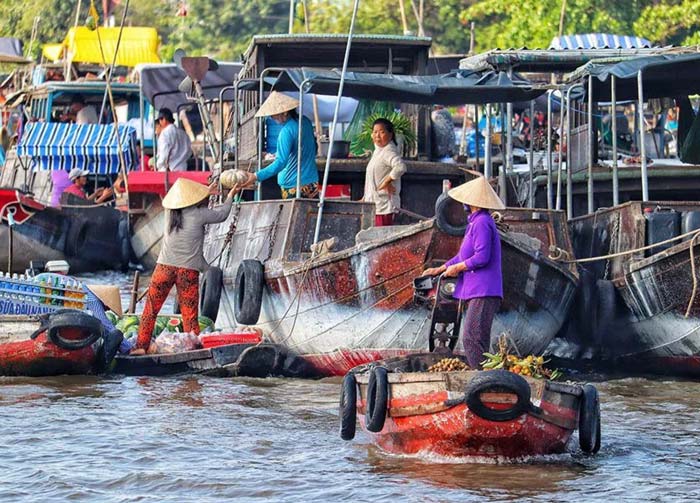
Floating market in the Mekong Delta, Vietnam
During your stay in Vietnam, you’ll likely visit one or two floating markets at most. Choosing which one to experience can be tricky, which is why we’ve put together a list of the five most important markets in the region.
The main floating markets of the Mekong Delta
Let’s discover five typical and well-known floating markets, each located in a different province of the Mekong Delta. For each one, we’ll highlight its unique characteristics.
Cai Rang Floating Market (Can Tho City)
Cai Rang Market, located in Can Tho Province, is the largest and most famous of all the floating markets in the region. It mainly attracts traders who come to buy goods in bulk, which is why it can be considered a semi-wholesale market.
Tourist visits here are very well organized. You can hop on a sampan from Ninh Kieu Wharf, located about 4 km from the market. The market runs from 3:00 a.m. to around 9:00 a.m., and on festive days—such as in the lead-up to Tet—it often stays lively even longer.
This market is a bustling hub for the region’s signature fruits: Vinh Long grapefruits, Lai Vung mandarins, and Cai Mon durians. You can even find unique specialties such as coconut wax produced in Tra Vinh.
Vendors pay a small fee to the boatmen, which allows travelers to sample local specialties right on the water from roaming sellers during the market.
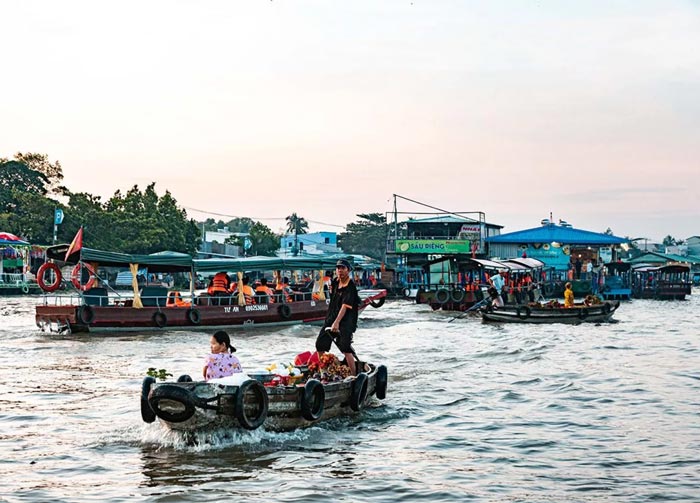
Sur le fleuve Mékong au marché de Cai Rang, Can Tho, Vietnam
Long Xuyen Floating Market (Long Xuyen Province)
Long Xuyen Market, located in the province of the same name, is also a semi-wholesale market for traders. Smaller than Cai Rang and far less visited by tourists, it is an excellent choice if you’re looking for a more authentic experience.
To explore this market, you can board a sampan at O Moi Wharf, located just a 10-minute walk from downtown Long Xuyen.
The market starts around 5:00 a.m. and winds down by 9:00 a.m. We highly recommend arriving early and enjoying breakfast right there—try a steaming bowl of fish noodle soup from a local vendor.
Each boat specializes in a particular product, which is displayed by hanging it on a pole so that everyone can easily see what’s for sale.
This market sees very few tourists, so you’ll never feel like just another product as you wander among the boats! The only downside is that, apart from the market itself, Long Xuyen offers relatively few tourist attractions and has a rather limited choice of hotels.
Nevertheless, once again, visiting this market is well worth the trip.
Cai Be Floating Market (Tien Giang Province)
The Cai Be Floating Market takes place on the edge of Cai Be town in Tien Giang Province. As you cruise along, you won’t miss the town’s church, standing gracefully by the riverbank.
While the Cai Be area is undeniably beautiful, the floating market itself has gradually been overshadowed by the town’s land market. To catch the action, you’ll need an early start—arriving around 6:00 a.m. At dawn, dozens of boats loaded with all kinds of goods gather on the river to sell their cargo.
A 30-minute boat ride is enough to experience it… and by 8:00 a.m., it’s all over!
If you only have limited time to explore the Mekong Delta and this ends up being the only market you visit, then go for it! Otherwise, we recommend prioritizing the first two markets mentioned.
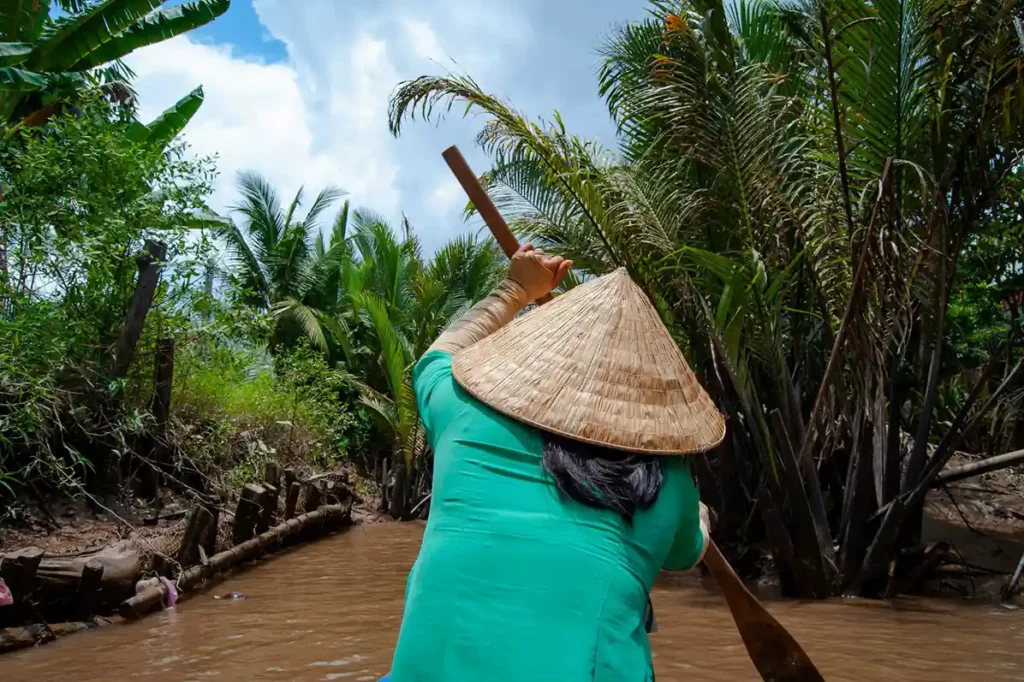
Cruising along the small arroyos near Cai Be, Mekong Delta
Nga Nam Floating Market (Soc Trang Province)
Let’s step off the beaten path of the Mekong Delta to discover the Nga Nam Floating Market, located in Soc Trang Province—the southernmost of all the provinces featured in this article.
This market is especially vibrant as it sits at the intersection of five river branches—Ca Mau, Vinh Quoi, Long My, Thanh Tri, and Phung Hiep. Thanks to this unique location, it attracts sellers from many different parts of the province.
Although it’s quite far from the other tourist destinations of the Mekong Delta, making the trip is absolutely worthwhile. With very few tourists around, you’ll get to experience a lively, authentic, and bustling market!
At this market, you’ll encounter many people of Khmer origin. In fact, Soc Trang Province is home to nearly 400,000 members of the Khmer minority—making up about a quarter of the province’s population.
Beyond the market itself, we recommend visiting the beautiful pagodas built during the time when the region was still under Khmer rule. For example, you can explore the famous “Bat Pagoda,” a remarkable symbol of Theravada Buddhist architecture.
Phung Hiep Floating Market (Hau Giang Province)
The Phung Hiep Market is located in Nga Bay Commune, Hau Giang Province. It sits at the crossroads of no fewer than seven river branches.
This is a truly unique market, famous not only for its fruits but also for its animals. Here, you can find and even purchase lizards, turtles, iguanas, and even snakes! You’ll also have the chance to taste snake wine. Don’t worry—these animals are not roaming free, so there’s no risk of them climbing onto your boat!
You now know the main floating markets of the Mekong Delta.
Here’s our ultimate tip: if you only have a short time in the Mekong Delta (1 or 2 days), make sure to visit the grand Cai Rang Market. If you have more time, head to Long Xuyen—you won’t regret it.
In any case, you’ll have no choice but to rise at dawn to fully enjoy the lively atmosphere of whichever market you choose!

